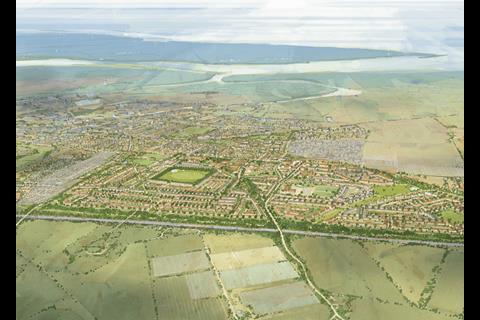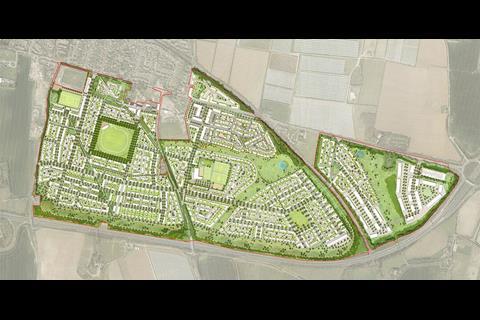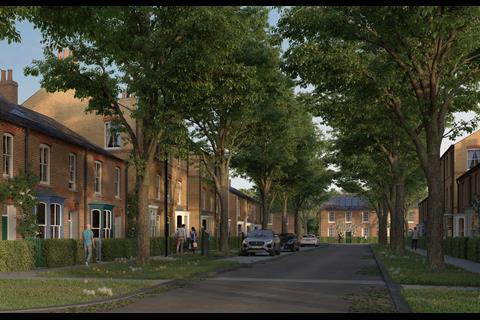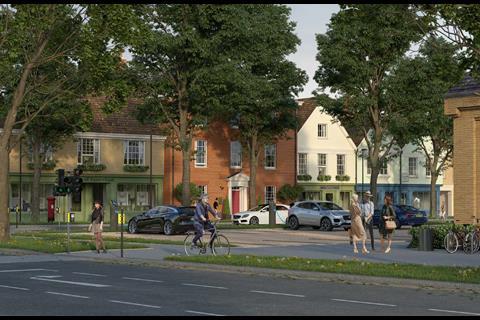As the Duchy of Cornwall proposes a new 2,500-home Poundbury-style scheme in Kent, Paul Smith argues greater competition is the real key to improving housing design
The government want us all to have more beauty in our lives. The word “beautiful” appears a total of eleven times in the latest version of the National Planning Policy Framework.

A new Office for Place has been established with a remit to help create “beautiful, successful and enduring places.” Local authorities have been tasked with producing area-wide design codes to ensure new development is of the highest quality.
The government sees building beautiful homes as a cure-all to remove opposition to new development.
As Michael Gove explained, “we know that communities will welcome development when it is beautiful. I saw for myself in Poundbury the support that exists for the right sort of major development if it is properly master-planned and well designed.”
Poundbury, of course, is the Duchy of Cornwall’s exemplar extension to the Dorset town of Dorchester. Started in 1993, development of the mixed-use new community was governed by a design code to ensure an emphasis on quality. It is currently home to more than 4,100 people, with houses selling for an average price over £400,000.
The government’s hypothesis - that if all new developments were like Poundbury, opposition would melt away - is being put to the test in the market town of Faversham, in Kent, where the Duchy of Cornwall is advancing plans for a new Poundbury-style development of 2,500 market and affordable homes.
The Duchy’s proposal, which goes by the snappy name of South East Faversham, has been in gestation for some time. In 2018, the Duchy carried out a three-and-a-half-day Enquiry by Design process to understand the community’s views and to assess the needs of the local area.
This resulted in an 85-page “Housing Manual” setting out key design criteria for the site – effectively a design code. Further consultations took place in 2021 and 2022, with a masterplan for the project submitted by Ben Pentreath in December last year.
As well as the new homes, the scheme will include a primary school, a new high street with restaurants, cafes and offices (with space set aside for independent retailers), a new employment area including specific space for small businesses, a pub overlooking the ground of the relocated Faversham cricket club, an improved 3G pitch for the local football club and potentially a care home.
The environment is central to the proposals. The homes are intended to be powered entirely by renewable energy, while over half of the site will be green space including parks, wildflower meadows, community orchards, woodlands and allotments that will combine to deliver a 20% net gain in biodiversity. Footpaths and cycleways will cut through these open spaces, creating a highly connected neighbourhood that won’t be car dependent.
>> Also read: Ben Pentreath to receive $200,000 architecture prize in Chicago
This sounds like exactly what the government wants. A design code-led development that has been subject to best practice consultation and makes a genuine attempt to deliver an environmentally friendly, high-quality new community with the physical and social infrastructure needed to support it.
But the locals aren’t happy. “It seems there’s no end to the greed of Prince William and King Charles!! It’s a disgrace that they pose as environmentalists when in fact they’re like all developers and it’s purely about the money! And what about food security? All this Grade 1 and 2 farmland being concreted over,” wrote one local resident on Facebook, in a fairly typical response.
The British Social Attitudes Survey suggests that fewer than 7% of people are more likely to support new house building if it is better designed.
We shouldn’t be surprised that the proposal hasn’t been welcomed with open arms, however beautiful it might be. The British Social Attitudes Survey suggests that fewer than 7% of people are more likely to support new house building if it is better designed.
Indeed, even Poundbury wasn’t universally popular. The Ramblers claimed it would be an isolated “ghetto.” Existing residents actually opposed its expansion.
Regardless of the impact it will have on the support for new development, improving design is undoubtedly a worthwhile aim. No one would dispute that we can and should try to deliver the highest quality new developments possible. Doing so will need both carrot and stick.
The stick of regulation – like design codes and stronger policy support for refusing poor design – will help create a floor for quality standards, eliminating the worst offenders. The carrot is making more land available for development.
>> Also read: Will design codes help unlock the planning system?
With our current constrained land supply, the main point of competition for developers isn’t for home buyers – it’s the land market. When housing supply is so far short of demand, there is rarely more than one new development in each market area, giving home buyers little choice. It is commercially rational to save cost by reducing quality if it produces a winning bid for a development site.
The iPhone isn’t beautiful because of government regulations; it is beautiful because Apple want you to buy their product over anyone else’s.
But if more planning permissions are granted, and more sites are allowed to come forward, there will be more competition for home buyers. The equilibrium point in the market will shift. Customers will be able to choose the development they like best, rewarding better quality design – and the home building industry will respond. The iPhone isn’t beautiful because of government regulations; it is beautiful because Apple want you to buy their product over anyone else’s.
Which all suggests the government have got this the wrong way around. Legislating for beautiful design won’t increase the supply of homes through reduced opposition; but increasing the supply of homes will see them become more beautiful.
Competition is a powerful force.
>> Also read: Duchy of Cornwall’s 2,500-home Kent plans progress
Postscript
Paul Smith is managing director of Strategic Land Group





















No comments yet